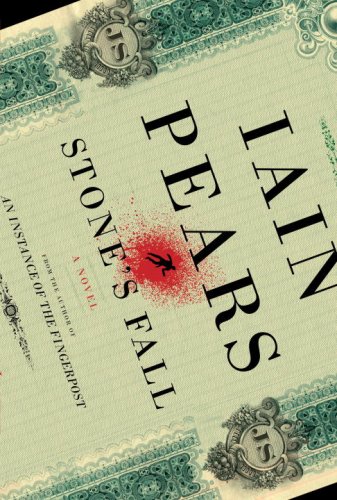Stone’s Fall
The story straddles the 19th and 20th centuries, and, like the author’s An Instance of the Fingerpost, is narrated by a number of different characters. Each tells a part of the story, amplifying and explaining what has gone before, even though the three parts are chronologically in reverse order.
Lord Ravenscliff, a hugely successful and wealthy arms manufacturer, dies in odd circumstances. His widow, the charismatically attractive Lady Elizabeth, employs a journalist to track down a hitherto unknown child of her husband, who is to receive a substantial bequest in his will. This reveals a complicated web of intrigue, duplicity, espionage and mysterious romance. The second part of the story, told by a young spy Henry Cort, reveals Stone’s Machiavellian role in a banking crisis (with contemporary relevance concerning the current crisis in Western finance) in the late 19th century, as Russia and France combine in an attempt to bankrupt the Bank of England. John Stone sneakily manipulates the emergency to expand his maritime industry empire. The final part is narrated by Stone himself, and set in Venice, where the young arms magnate first sees the opportunities for wealth in making and selling torpedo technology to the world’s navies.
The reader needs to be alert to be fully aware of all the serpentine twists and unexpected developments in the tale. It is a long book, but written in a congenially authentic style, and with tight and capable plotting making it an ultimately enjoyable and rewarding read, with an entirely unexpected and unforeseen conclusion.










